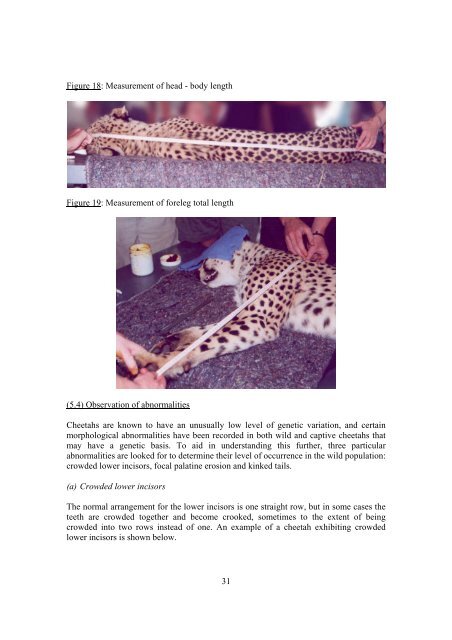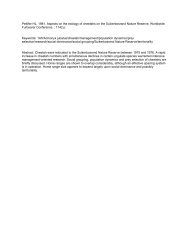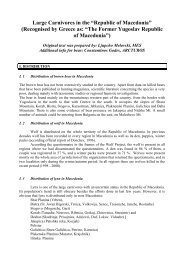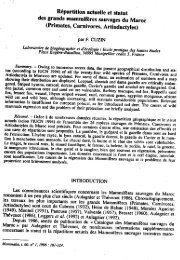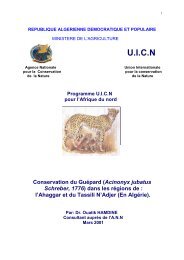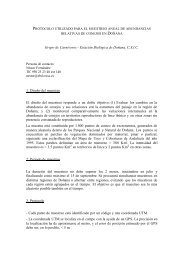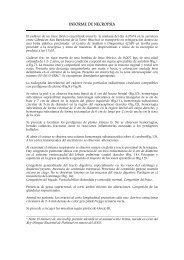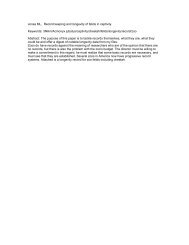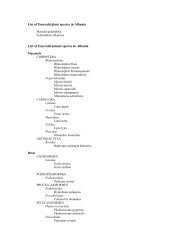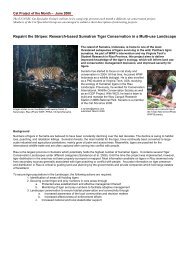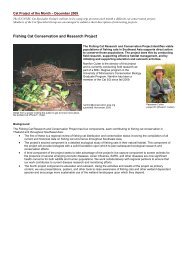cheetah capture and immobilisation handbook - Cat Specialist Group
cheetah capture and immobilisation handbook - Cat Specialist Group
cheetah capture and immobilisation handbook - Cat Specialist Group
You also want an ePaper? Increase the reach of your titles
YUMPU automatically turns print PDFs into web optimized ePapers that Google loves.
Figure 18: Measurement of head - body length<br />
Figure 19: Measurement of foreleg total length<br />
(5.4) Observation of abnormalities<br />
Cheetahs are known to have an unusually low level of genetic variation, <strong>and</strong> certain<br />
morphological abnormalities have been recorded in both wild <strong>and</strong> captive <strong>cheetah</strong>s that<br />
may have a genetic basis. To aid in underst<strong>and</strong>ing this further, three particular<br />
abnormalities are looked for to determine their level of occurrence in the wild population:<br />
crowded lower incisors, focal palatine erosion <strong>and</strong> kinked tails.<br />
(a) Crowded lower incisors<br />
The normal arrangement for the lower incisors is one straight row, but in some cases the<br />
teeth are crowded together <strong>and</strong> become crooked, sometimes to the extent of being<br />
crowded into two rows instead of one. An example of a <strong>cheetah</strong> exhibiting crowded<br />
lower incisors is shown below.<br />
31


